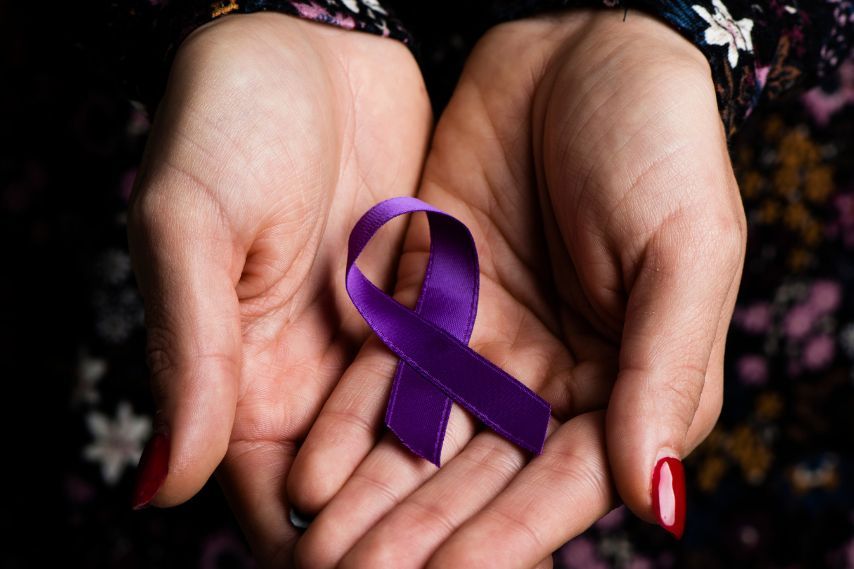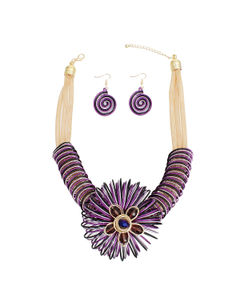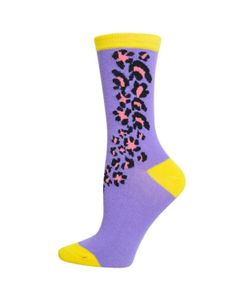Domestic Violence Awareness

A Symbol of Strength and Support for Domestic Violence Awareness
Domestic Violence Awareness Month (DVAM) is observed in the United States every October to raise awareness about domestic violence and to promote efforts to end it. The origins of DVAM can be traced back to the "Day of Unity," which was conceived by the National Coalition Against Domestic Violence (NCADV) and held in October 1981. The goal was to connect advocates working to end domestic violence across the country and to mourn those who had lost their lives to domestic violence.
The "Day of Unity" evolved into a week-long event, and by 1987, it had expanded to the entire month of October, officially becoming Domestic Violence Awareness Month. The aim is to shine a spotlight on the prevalence of domestic violence, support survivors, and educate the public on ways to prevent and respond to domestic violence.
Why Purple?
Purple is the designated color for Domestic Violence Awareness Month. It symbolizes courage, survival, and the fight to end domestic violence. By wearing purple, you not only show your support for survivors but also help raise awareness about the prevalence of domestic violence and the importance of breaking the cycle of abuse.
- Symbol of Strength: Purple, a bold and distinctive color, symbolizes courage and strength in the face of domestic violence.
- Historical Connection: Rooted in the suffrage movement, purple signifies dignity and justice, linking domestic violence awareness to the historical struggle for women's rights.
- Global Consistency: Adopted globally, purple provides a consistent symbol for domestic violence awareness, fostering unity and recognition.
- Spiritual Connotations: Purple's association with spirituality represents hope, compassion, and a collective pursuit of understanding in addressing domestic violence.
- Empowerment Symbol: By choosing purple, the movement empowers survivors to break the silence, seek help, and embark on a journey of healing and change.
Funds to Freedom: Empowering Lives, Silencing Violence
Turning pain into power, one dollar at a time. Because when we fundraise for domestic violence, we're not just raising money — we're raising survivors, voices, and a force to end the silence.
Fundraising for Domestic Violence Awareness can be incredibly impactful in several ways. Here are some key ways in which fundraising efforts can make a difference:
1. Support for Survivors: The funds raised can be directed toward supporting survivors of domestic violence. This may include providing emergency shelter, counseling services, legal aid, and other resources that assist survivors in rebuilding their lives.
2. Awareness Campaigns: Fundraising can contribute to developing and implementing robust awareness campaigns. These campaigns can reach a wide audience through various channels, including social media, traditional media, and community events, helping to educate the public about the prevalence of domestic violence and its impact.
3. Educational Programs: Funds can be allocated to educational initiatives to prevent domestic violence. This may involve developing and implementing educational programs in schools, workplaces, and communities to promote healthy relationships, conflict resolution skills, and awareness of warning signs.
4. Community Outreach: Fundraising efforts can support community outreach programs that engage with local communities to raise awareness, provide resources, and foster a supportive environment for those affected by domestic violence.
5. Crisis Hotlines and Services: Financial contributions can enhance or establish crisis hotlines and services that immediately assist distressed individuals. This can be a lifeline for those seeking help in urgent situations.
6. Legal Support: Funds can be used to provide legal aid for survivors navigating the legal system. This can include assistance with obtaining protective orders, custody arrangements, and other legal matters related to domestic violence.
7. Technology and Innovation: Fundraising can support the development of technological solutions to aid in preventing and intervening in domestic violence. This might include apps, online platforms, or other tools that provide resources and support to those in need.
8. Research and Data Collection: Funding can contribute to research initiatives that better understand domestic violence's root causes and patterns. This knowledge is crucial for developing evidence-based prevention and intervention strategies.
9. Training Programs: Funds can train professionals, including law enforcement, healthcare providers, and social workers, in recognizing and responding to domestic violence. Training programs can improve the overall community response to this issue.
10. Policy Advocacy: Financial contributions can support advocacy efforts to influence and change policies related to domestic violence. This may involve lobbying for stronger legal protections, increased funding for support services, and improved professional training.
11. Creation of Safe Spaces: Funds can be used to establish safe spaces and shelters for individuals fleeing domestic violence. These spaces provide a secure environment for survivors to rebuild their lives away from their abusers.
In summary, fundraising for Domestic Violence Awareness is vital in providing resources, raising awareness, and supporting initiatives to prevent and address domestic violence. The collective impact of these efforts contributes to creating a safer and more supportive society for those affected by domestic violence.
How Can You Wear Purple?
Here are many ways to incorporate purple into your wardrobe to support Domestic Violence Awareness in November:
1. Purple Clothing: Wear purple clothing, such as t-shirts, sweaters, scarves, or socks. Donning a purple outfit is a simple yet effective way to show your commitment to the cause.
2. Purple Accessories: Consider purple accessories like jewelry, hats, or shoes to add color to your ensemble. This subtle touch can make a powerful statement.
3. Purple Ribbons: Attach a purple ribbon to your lapel, backpack, or bag. This small, visible symbol can spark conversations and educate others about the cause.
4. Purple Makeup: Get creative with purple makeup, from eyeshadow and lipstick to nail polish. Express yourself while promoting awareness.
5. Purple Masks: In these times of mask-wearing, you can even find or create purple face masks with messages about domestic violence awareness.
6. Spread the Word: Wearing purple is not just about fashion; it's about being an advocate and ally for those affected by domestic violence. Share your purple attire on social media with the hashtag #DVAM or #PurpleWearDay to inspire others to join the movement. Additionally, use this opportunity to educate yourself and others about the signs of domestic violence and the resources available for those in need.
Remember, wearing purple in November is a visible sign of support and solidarity with survivors of domestic violence. It's a reminder that we stand together to break the cycle and create a world free from abuse.




























